
It’s Bluebell time, so we visited Liverpool’s best-known Bluebell Wood, tucked away behind Aintree University (Fazakerley) Hospital and HMP (His Majesty’s Prison) Altcourse. On the way down Higher Lane from the bus we spotted a wonderful combination of garden trees – a Laburnum in full bloom backed by a red Sycamore or Maple and the fresh green of what might be a Whitebeam.
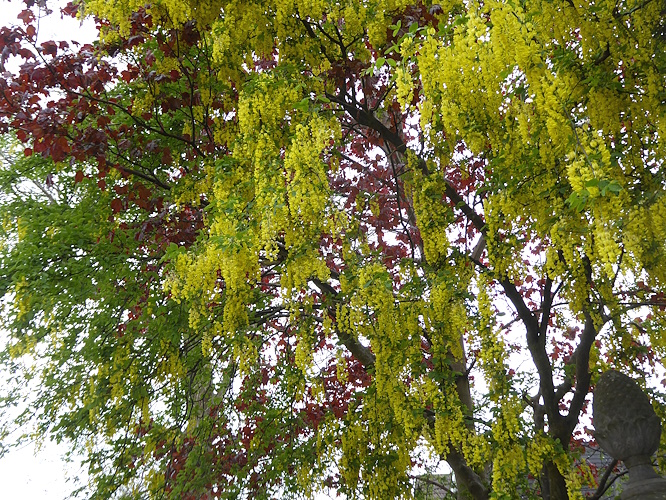
The five hectares of old woods are now part of the NHS Forest, being gradually improved with new paths and new trees, and used for education and recreation. It’s a mix of mostly Beech, Oak and Scots Pine, with the Fazakerley Brook running eastwards through it towards the river Alt. Flowers underfoot included Lesser Celandine, Garlic Mustard, Hogweed and Red Campion.
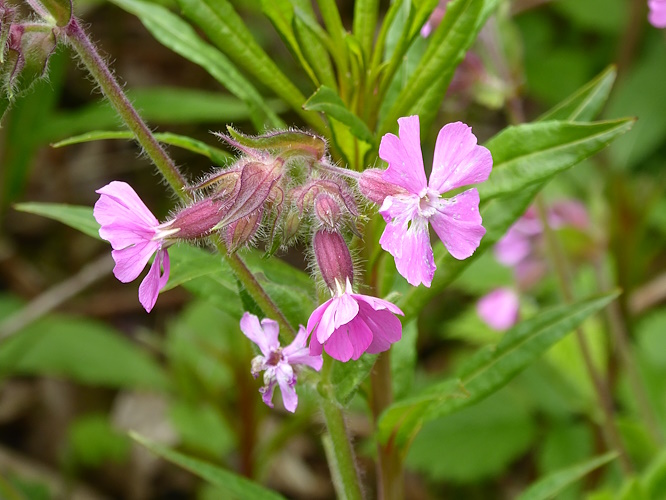
The Bluebells were a mixture of the invasive Spanish types, with tall upright stems and flowers all around, and the native English Bluebells with nodding stems and flowers on one side. There are hybrids everywhere too, but this one seems mostly English.
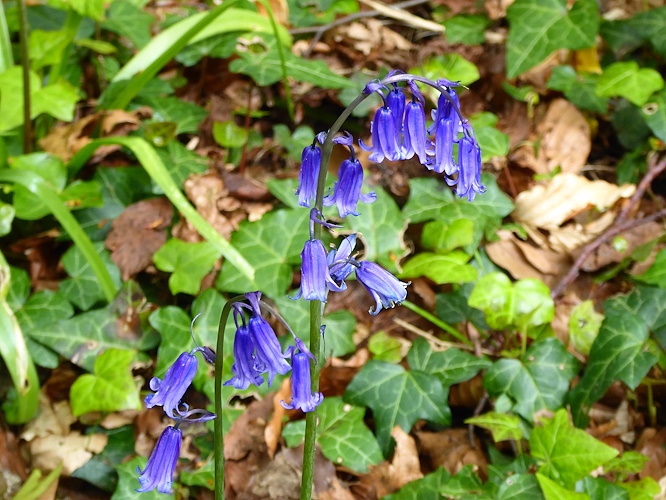
The birds like this woodland. We spotted Wren, Blackbird, Blue Tits, Crows and a Collared Dove calling. A Buzzard crossed the path and disappeared, an unidentified little warbler (a Chiffchaff?) sat on a Bramble stem and in an area of pines we spotted one or maybe several Treecreepers.
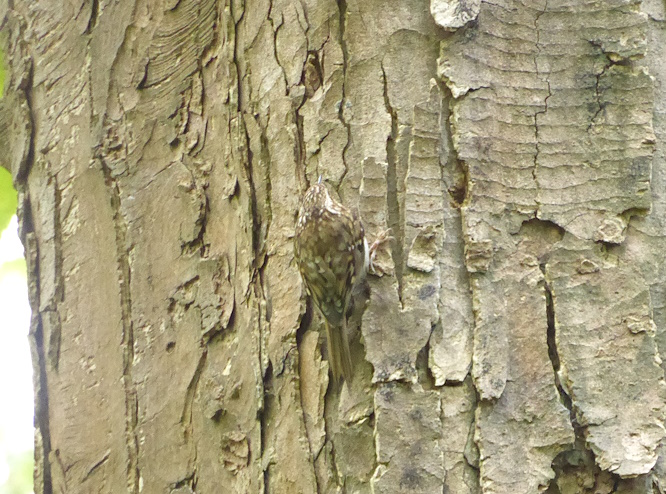
It’s hard to say if this is an old or ancient woodland. Indicators of its age are the Bluebells, the Lesser Celandine and this quite old Yew tree, the largest tree we saw, which was probably several centuries old.

But in amongst the native trees were strange introductions, like Rhododendron, Cherry Laurel, a Monkey Puzzle tree, and a Red Horse Chestnut, as if this had been an estate of a rich Victorian gentleman. British History Online suggests there was once a Fazakerley Hall, possibly just a manor house, but it was sold soon after 1717 and not mentioned in historical records again. That’s too early for some of the introduced trees. A mystery. Here’s the Monkey Puzzle tree, not very old, badly shaded by the surrounding trees and sprouting new growth from low down on the trunk. They don’t usually do that.
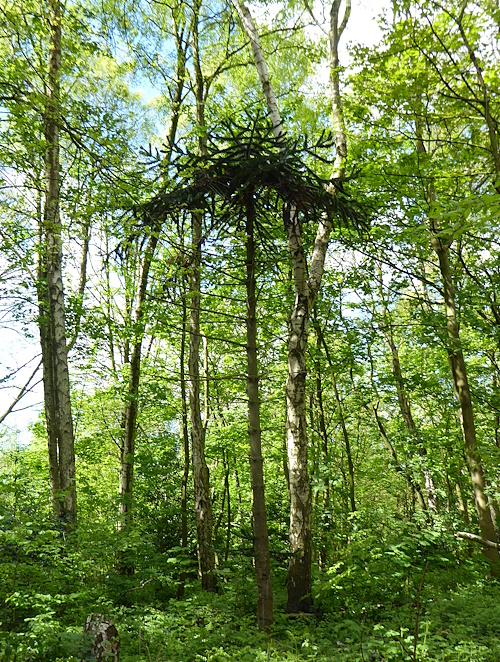
There was a mystery about the Cherry Laurel too. It had grown with a pronounced lean, and the underside of the trunk was covered with large flat fungi, of a leafy or scaly type. The edges of it felt quite hard. I wonder what that is? (Added later: It’s Bleeding Broadleaf Crust Stereum rugosum. It’s supposed to “bleed” or turn red if you cut the surface. Thanks Sabena.)
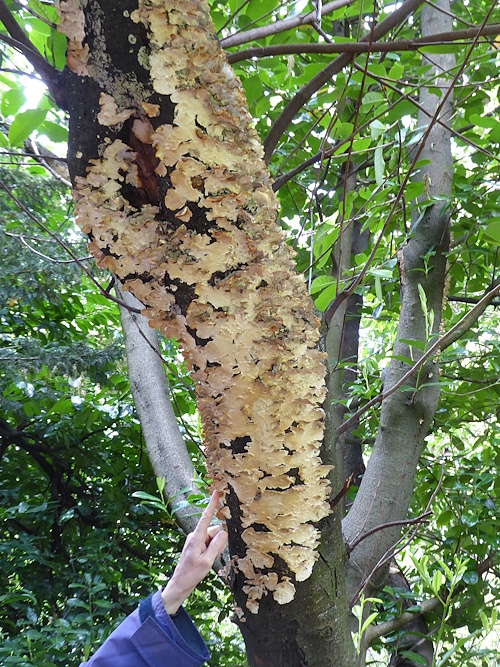
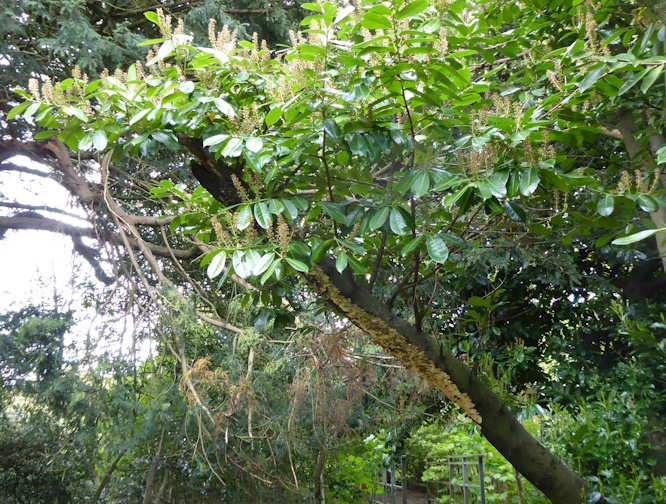
We found a convenient log to sit on for lunch, and then visited the hospital facilities. On the other side of Lower Lane is “Fazakerley Hall and Recreation Ground”. It is just one path, with grass and shrubbery on either side, running for about half a mile along the banks of the Fazakerley Brook. The locals call it the “Donkey path” apparently, as someone once kept donkeys in a field on the other side of the brook.
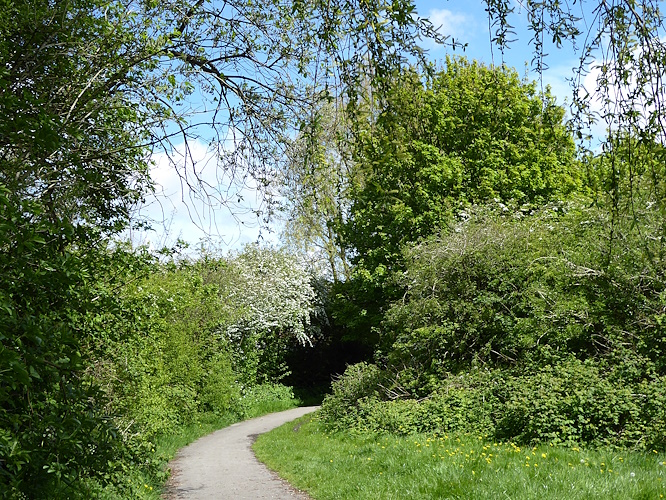
It was surprisingly good for butterflies. There had been some Orange Tips in the woods and as we crossed the road a Brimstone flew past us. There was a Small White on a Dandelion and later we found a Speckled Wood resting on bare ground. That’s more species in one day than we’ve had for a while.
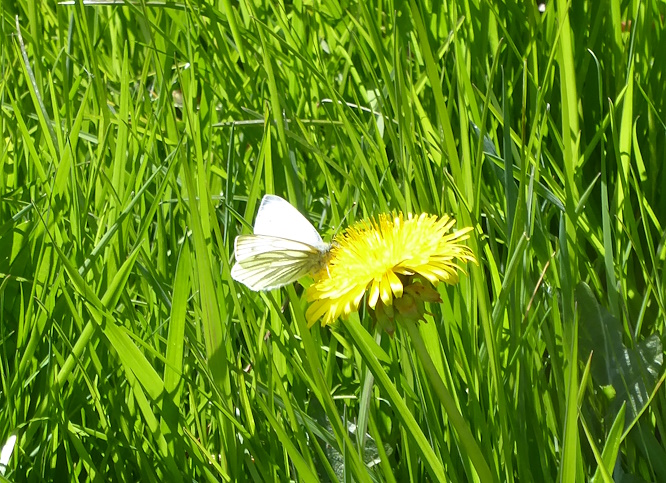

There was no special reason for the butterflies that I could see. Maybe it was just the first warm sunny day, perhaps the plentiful Daisies and Dandelions in the longish grass, with a few early Cuckoo flowers coming out. Or maybe it was the flowering native shrubs, like Hawthorn, Elder (just out) and the Dogwood in bud.
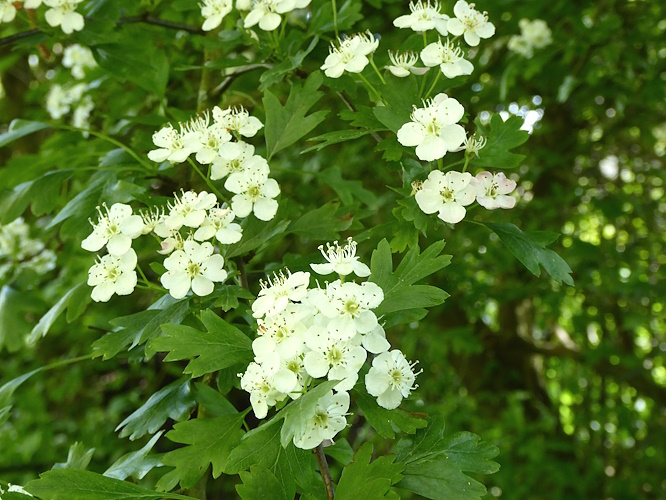
Public transport details: Bus 21 from Queen Square at 10.05, alighting Longmoor Lane / Seeds Lane at 10.36. We all went home different ways, but I took the 63 bus from outside the hospital at 2.02, which took me back to Crosby.
